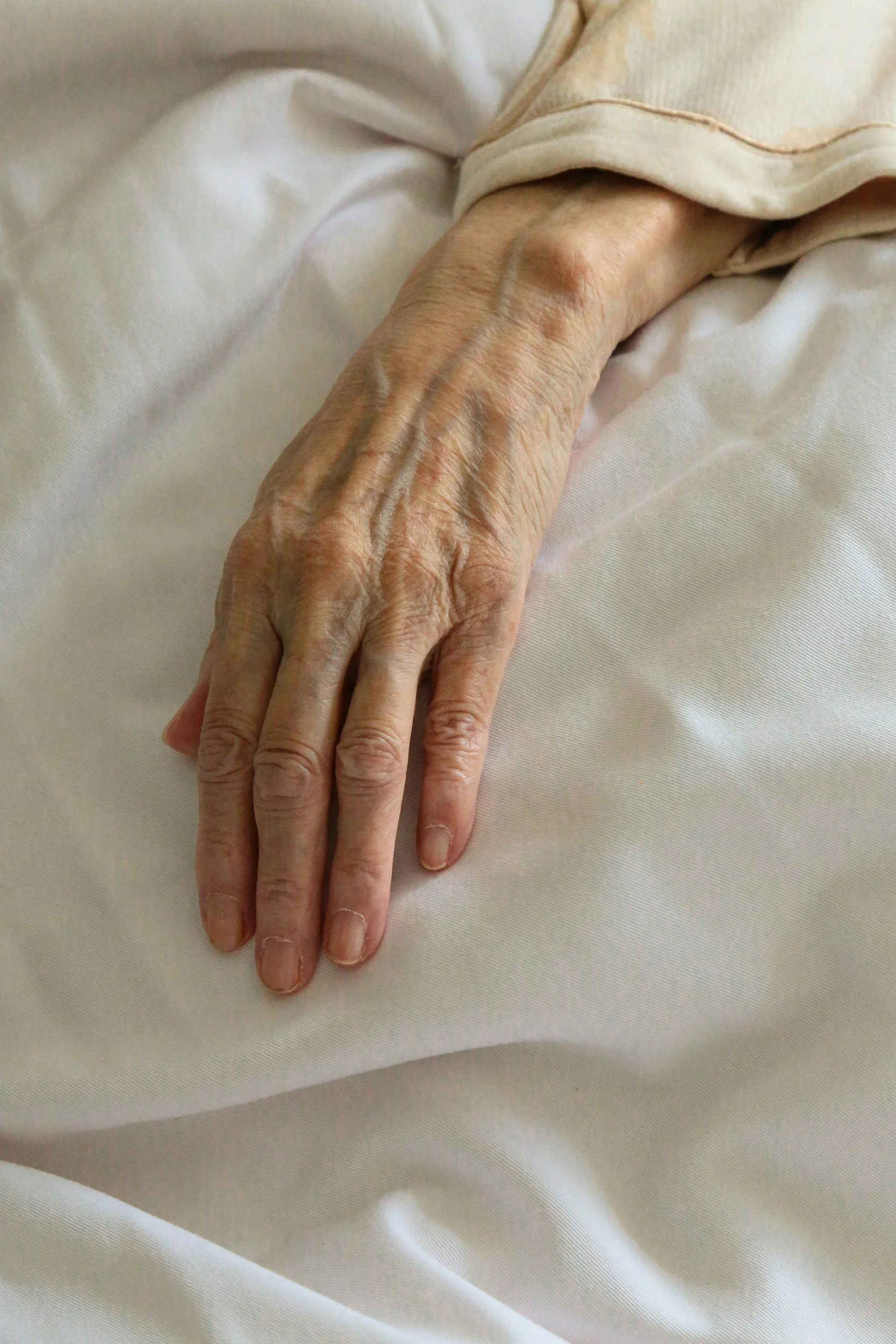How to Host a New-Age-y Wake
To prepare for a friend’s wake, you will need a good, sturdy, circling-the-wagon group of friends because, even if your friend has family, she will still need her friends. Over the years, she has gathered you up like so many buckeyes and strung you together. Now, you will need each other. Together, you must attend to the details, like where the body will be displayed. If the dying person wants to be placed in a casket, you can buy one or, if someone, for example, the spouse of the dying person is good with his hands, he can whip one up from some slabs of pine, then store it in the tool shed next to the lawnmower and kayaks and mountain bikes.
While this may seem like a lot of trouble, especially if your loved one is going to be taken out of the casket and cremated after the wake, think of it as a long-term investment. After all, you can reuse it for another family member—or as a planter. And it will bring some levity when, after you and all the other friends and family have a few glasses of wine at the wake, you joke about leasing it later, or measuring it for your own custom-made casket. Of course, if your loved one does not want to be placed in a casket, there are other options—tables and beds. Just keep in mind that dying, like living, is a messy process. Fluids leak. Smells seep. You want to use something you can douse with Clorox.
Whether the wake takes place immediately after death or later, you will need dry ice. For convenience, you can buy it ahead of time and store it at room temperature so it doesn’t take up too much room next to your Haagen Daz and frozen corn and chicken pot pies and whatnot. Then, a day or two prior to use, you should move the dry ice into your freezer. A word of caution here: The timing can be tricky, particularly if your loved one experiences a phenomenon commonly known as rallying, and then you will later have two periods of dying you will refer to as
(1) the first time she died and
(2) the time she really died.
Once you are certain this is really the time and not a practice run, go ahead and heat up a pot pie and break out a couple of cartons of ice cream to create space. This will be easier if your friend is at home, and you have spent so much time there—at dinners and parties and your “We Hate George Bush” book club gatherings and quiet afternoons on her back porch and evenings lounging in her living room, you on one sofa, her on the other—that her place feels like your second home. That way, you will know where to find the pie servers and the oven mitts and the company dishes. You will know where she stores the coffee, where she stashes the emergency gummies. After all, this endless process of grieving and waiting and hoping and wanting and grieving will make you hungrier than you think.
When the time for hoping is finally over, sit with your friend and eat the ice cream and sleep on the living room sofa next to the empty casket in the alcove because that’s what you said you would do. As trite as it sounds, you know if that were your casket in the alcove, she would be doing the same thing.
“What’s it going to be like?” your friend might ask. Or “Why is it all so sparkly?”
Of course, you will not really know, but you should try to think of a few comforting responses. We don’t know, you might say. You will have to tell us. General, noncommittal statements do not betray the fact you don’t believe in much of anything.
When you finally gather around the dying person’s bedside, in what is normally the dining room but which has been transformed into a hospice room, perhaps this will be a good time to go over The Plan. For example, if someone mentions that Debbie the Death Doula is not available today but her daughter, who is also a doula, is available, you can all laugh about how Debbie the Death Doula’s daughter alliterates. This will be a fun diversion in an otherwise stagnant afternoon filled with watching and waiting and listening. So maybe you will take turns coming up with different ways to say it when suddenly you realize the gap between your friend’s previous breath and the next has grown long, long, long, and one of you will say, “That was a really long pause.”
And, just like that, your friend will be a body.
This is the moment when you really must concentrate, move quickly past thinking of this body in front of you as the person you have loved, stop remembering this body as she was hours ago or weeks ago or years ago. You must not picture her dancing around your friend’s living room, a vacuum cleaner hose pressed to her mouth like a microphone while she sings backup to ABBA’s “Does Your Mother Know.” Take it easy, take it easy… You must not remember the party she threw for her husband’s sixtieth birthday in this very space, the row of white beads hanging between the foyer and the living room, the red and blue lava lamps illuminating the house, the sprawling fondue bar, the one-hitter and the bottomless Manhattans, the endless Rolling Stones set. You must not see the two of you at the end of one lazy, margarita-filled afternoon the summer after her diagnosis, sprawled beside each other on the beach Bald Head Island. Do not recall her sunglasses and wide-brimmed hat, the way she stopped reading The Power of Now, placed the bookface down on her stomach, and gazed up at the clouds.
“There’s an elephant,” she said, pointing to a swirly, gray cloud. “And that one is a frog.”
You shield your eyes with your hand. The frog floats headfirst, his feet tucked under his bulging belly.
“Look,” you say, pointing to another cloud. “There’s a man’s face.”
You did this for forever, as if time stopped completely, and you were kids lying on your backs, toes digging in the sand, the only sounds the crashing waves, the seagulls calling overhead.
“That one,” your friend says, pointing to a narrow, swirling cloud, “looks like it is going to come down here and suck me up and take me way up there into the sky.”
The air is thick and steamy. Sweat pools on your chest, trickles down your ribs. You don’t know what to say. Do you pretend you didn’t hear, you don’t know what she meant? She was not looking at you, not even talking to you, really. And before you can respond, she continues.
“And if it came down here for me right now, I think I would just say, ‘I’m not ready yet.’”
Now, you do not remember what you said in response, the right thing or the wrong thing or nothing at all. You only know that, all these years later, you still feel the grainy sand between your toes and the sting of salt on your sunburned lips, still see the tornado cloud spiraling benignly through the wide, blue sky.
But this, you see, is an example of What Not to Do, of the way your thoughts can shove their way to the forefront if you let them, a thought insurrection, a mosh pit of despair. Instead, you must focus on the task at hand. First, close the dead person’s eyes. Rigor mortis will set in a couple of hours, and you do not want those blank eyes staring at you, accusing you of freewheeling, of bullshitting your way through all the tough parts.
“Do you believe we can choose when we die?” this body asked you once.
You had no idea, no way of knowing, no faith to offer you any guidance. And yet you said, “Yes. Sometimes I think we can.”
And she sighed a contented sigh.
“I do too,” she said. “I think I will get to choose.”
But what you have just seen did not look like choosing. It looked like succumbing, like a plane was going down, and you strapped on your oxygen mask, cradling your head between your knees and bracing for the inevitable. Which was not the same as choosing, not by a long shot.
Hopefully, soon after you have bathed the body, the doula will arrive to do the more clinical parts, the swabbing and sealing of the orifices, the suturing of the mouth. Perhaps the dead person herself will have arranged for this before she was a dead person, and if so, you will have one more thing to be grateful to her for. (Another word of caution: Do not accidentally walk past and peer in the room during the suturing of the mouth unless you have a very strong constitution.) Next, once the body is tightly packaged, consider using a special soap to bathe it. A combination of shea butter and coconut oil scented with ylang-ylang and orange oil is nice, perhaps a bar from the batch the dead person made with two of your mutual friends.
You should note, however, that bathing may take more people than you think because as soon as the patient dies, the body becomes flimsy and floppy. If you turn the head, the rest of the body stays put. If you move the torso, the head stays transfixed. You need one person to support the head, one person to wash, one person to lift and rotate the body, one person to hold a sheet to shield the body from the guests already gathering in other rooms, to allow this person whose body has not been her own for over a decade a final moment of privacy.
In that quiet, alone but not alone time, you, too, will become ethereal, unfixed to any particular place. You will drift back and forth through time, arriving at the strangest places, like back in middle school in seventh-grade love with Shannon, a shaggy-haired, blond boy. Already a hard drinker and stoner, he was destined to die an early death. Back then, you had no concept of such things, and Shannon was just the right level of dangerous. Each evening, you lay on the sky-blue carpet in your parents’ bedroom, your socked feet pressed against the blue wall, the blue rotary phone wedged between your ear and shoulder.
“Say ‘I love you,’” Shannon whispered.
“I love you.”
“No, no, not like that,” he cooed. “Say it like this: ‘I…love…you.’”
Twisting the phone cord around and around your fingers, you tried again and again to get it right.
It will be a funny thing to remember now, of all times, so many years later. And yet Shannon’s face, all young and suntanned and freckly, will come to you as vividly as the hammering from the house across the street, the whirring of bike tires on the road, a white squirrel fussing at something from a nearby tree.
Some people look back and are glad they had this time with the body of the deceased. You will hear about people who found it cathartic, who have needed this image of the limp and lifeless body to imprint the reality of their loved one’s death. You will have read Smoke Gets in Your Eyes, Caitlin Doughty’s expose on the funeral business, and you have heard your grandparents tell stories of sending their loved ones off to the hereafter in this exact same way. You will recognize that being here in this moment is a privilege, an honor, a testament to the friendship you have shared with all the women in this room. And even if you are not religious in the traditional sense, you will feel this is a sacred moment.
Still, the logistics of dressing the body unnerve you. Maybe your friend told you what she would like to wear—black slacks, a red top—her colors. Perhaps, at the last moment, one of you will realize her top is too see-through, she needs a camisole underneath, and the Coordinator of the Clothes will run upstairs to her bedroom and grab one.
“She would want me to put this on,” she will say when she returns, a black camisole in hand.
She may cry while she slips it on the body because she, too, has forgotten the rules about not remembering. She will soon regain her compose because there is so much to consider. At the last minute, she will decide the body needs a finishing touch and will once again disappear upstairs, returning this time with a scarf she arranges just so over the body—reds and yellows and blues, cardinals and hummingbirds and gold finches and bluebirds, red-tailed hawks and peregrine falcons. A brilliant, soaring collage.
Once the body is dressed, you will need to retrieve the dry ice—approximately forty pounds, which you place at the bottom of the casket and cover with a cushion or blanket to complete the illusion of peaceful slumber. Or almost. Then, once the body has been moved to the casket, you apply makeup. Hopefully, you will have a nurse on hand, not your friend who happens to be a nurse and happens to have done this before as part of her professional duties. So the rest of you stand by watching while she spreads foundation over the body’s face, rubs rouge on its cheeks.
“Her facelift has held up well, hasn’t it?” someone might say.
And you can all attest to the fact that, though you had had your doubts—the sight of her bloated, bruised face the day she had the procedure caused you to pull the car over to the side of the road and place your head between your legs to keep from fainting (“Is it that bad?” she had asked. “Yes,” you said. “It’s that bad.”)—the work had ultimately proven to be good quality. When the nurse gets to the lipstick, the body’s lips might gape, but not to worry. Place one hand on the body’s chin, the other on the forehead, and press until the lips settle back together.
“I love that shade,” one of you might say as the nurse returns her attention to the lipstick.
And the nurse will turn over the tube and read the color from the bottom, and someone will suggest photographing it so you can all order some, but you will not take a picture because you think it is such a simple name you will remember. Later, though, after you have hastily removed all signs of the dying process—the bed and bedding, the medicine bottles, the syringes, the soiled pajamas—after you have reassembled the room into a bonafide dining room and filled the table with a spread of food and wine for the guests, after you have lined up next to the casket in the living room and words have been said, after you have all filed past and laid your favorite flowers across the deceased’s body like she instructed, you will not be able to remember the lipstick color or the brand or even the color of the tube.
But no matter. Tomorrow morning her body will be carted off and incinerated, and you will find you no longer desire that particular shade. Perhaps it will best be forgotten.
-Jennifer McGaha
An experienced teacher and workshop facilitator, Jennifer holds an MFA from Vermont College of Fine Arts and teaches at the University of North Carolina at Asheville. Her memoir, Flat Broke with Two Goats, was chosen as a 2018 Big Library Read for OverDrive, an international digital library. Her second memoir, Bushwhacking, is forthcoming from Trinity University Press. A native of Appalachia, Jennifer lives in a wooded North Carolina hollow with her husband, two cats, six unruly dogs, ten dairy goats, and an ever-changing number of chickens.





















